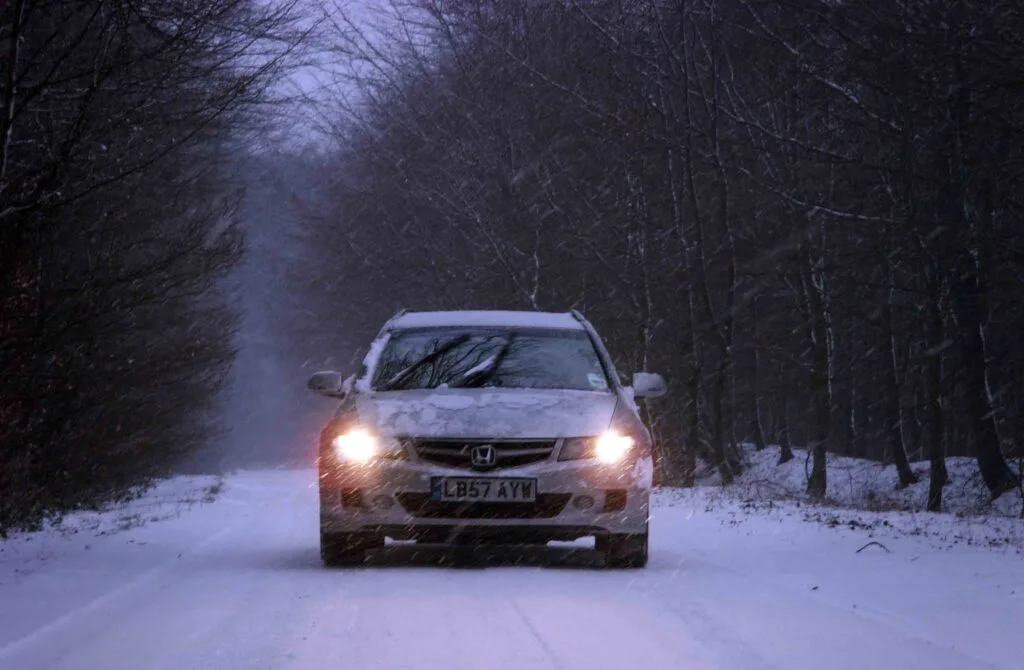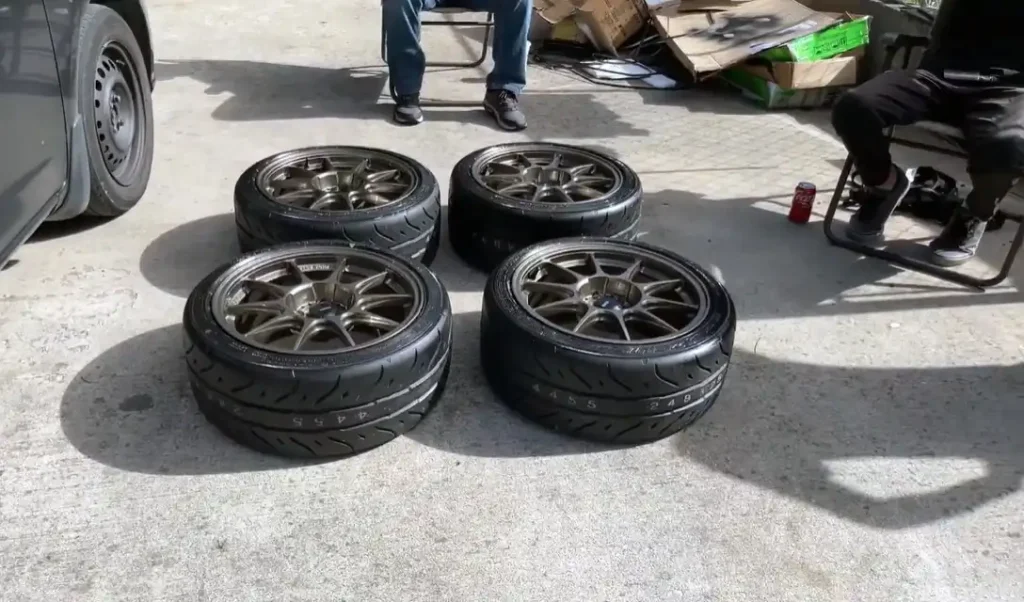For optimal tire health and vehicle safety, the tiny Honda Fit requires 33 pounds-force per square inch (psi) of tire pressure. So, it is important that keep the recommended tire pressure while riding the vehicle because high tire pressure or low tire pressure can damage the tire, as well as can cause accidents.
In this article, we discuss everything you need to know about the Honda Fit tire pressure with the relevant information you need. So, stick around until the end to find out what you’ve been looking for.
Why tire pressure is important?
Proper tire inflation is crucial for safety as it slows down accelerated deterioration that results in early tire replacement. Underinflated tires produce abnormal heat levels while being driven, which may eventually cause the tire to break.
Safety
Low tire pressure causes more of the tire’s surface to contact the road, increasing the amount of friction. As a result of increased friction, your tires are more likely to have tread separation, a tire blowout, and a major accident.
Longevity
Improper tire pressure can cause uneven and early tire wear, whether the tires are underinflated or overinflated. You won’t need to replace tires as frequently because properly inflated tires normally last a lot longer than incorrectly inflated ones!

Fuel Economy
Even more frequent trips to the gas station can result from incorrect tire pressure. By merely keeping your tires at the recommended pressure, you can increase your gas mileage by up to 3%.
Comfort
A ride will seem “harder” and bouncier when the tire pressure is too high since less of the tire will be in contact with the ground. You can have trouble stopping and lose traction with your car, and you’ll probably feel every pothole.
What is the perfect tire pressure for Honda Fit?
For proper tire health, your Honda Fit should keep its front tires inflated to 33 psi and its rear tires inflated to 32 to 33 psi. There is no need to adjust your tire pressure based on the precise trim level of your vehicle because this is true for all 2022 Honda Fit models.
- Front: 35 psi (high-speed driving)
- Rear: 33 psi (high-speed driving)
- Front: 33 psi
- Rear: 33 psi
| Vehicle | Front tire pressure | Rear tire pressure |
| 2022 Honda Accord | 32 psi | 32 psi |
| 2022 Honda Civic | 32 psi | 32 psi |
| 2022 Honda CR-V | 32 psi | 30 psi |
| 2022 Honda Odyssey | 35 psi | 35 psi |
| 2022 Honda Pilot | 32 psi | 32 psi |
| 2022 Honda HR-V | 32 psi | 28 psi |
Is 35 PSI too high?
The psi requirement for the majority of passenger cars will be between 30 and 35 psi, however a number of vehicles fall outside of that range and each vehicle will have unique requirements. A smooth ride, evenly distributed tire wear, and improved fuel economy are all benefits of proper tire inflation.
What has made the Honda Civic better in the snow?
When it comes to winter driving aids, the Honda Civic‘s Vehicle Stability Assist is a welcome addition. Using the Vehicle Stability Assist in low-traction winter conditions prevents your vehicle from losing control. – itismycar.com
Is it OK to put 40 PSI in my tires?
For instance, if 35 psi is advised but 44 psi is listed as the maximum safe pressure on your sidewall, you can put 38 or 40 psi in your tires without risk. The maximum pressure is 44 psi. Although the ride will be harder, there won’t be a blowout risk. You might even notice sharper cornering and better fuel efficiency.

What happens if the tire pressure is too high?
The tire’s efficiency will increase due to its inability to flex, which will reduce rolling resistance and increase (potentially see below) acceleration, top speed (unless restricted), and fuel economy.
A rougher ride with less comfort. Added traffic noise Oh, and the distorted tire profile will also result in a smaller contact patch, less grip, increased tire wear, a greater chance of wheel spinning (which would reduce acceleration), a greater chance of spinning off the road into a twisting pile of burning death, and significantly higher chances of the tire blowing. This might also result in you veering off the road and crashing into a fiery mess of death.
What happens if the tire pressure is too low?
The sidewalls of the tire flex more and heat accumulates within them when air pressure falls too low. A piece of the tire’s rubber may split from its carcass, which is made of a combination of fabric and steel if the overheating becomes severe. This could result in a blowout if it happens unexpectedly.
You run the danger of tire failure if you keep driving on a tire with low pressure. Imagine your tire blows when you’re traveling at 60 mph on a highway.
A similar situation could result in you losing control of your car at a fast rate of speed, putting you, your passengers, and other drivers in danger. Low tire pressure also has a negative impact on fuel economy and hastens tire deterioration.
How often should you check tire pressure?
We suggest at least once a month, although it is safer to check it each time you fill up with petrol. Some drivers believe that the tire pressure indicator on the dashboard is the only time they need to check it, but in reality, tires lose pressure every single day. They can lose one to two pounds of air per month when the weather is chilly.
How do I know if my tires need air?
Press the gauge tip against the valve stem until you hear air leaking out if the recorded reading from the tire gauge is higher than the manufacturer’s recommended rating. Once more, check the tire pressure. You must re-inflate the tire if the reading is lower than advised.
Is checking tire pressure once a week good?
However, a good rule of thumb is to do it every time you fill up with fuel or at least once a month. Ideally, you should check it every two weeks. With regular use, tires lose about one PSI (pounds per square inch) per month.
Some related FAQs about Honda Fit Tire Pressure.
What is the 4 PSI rule?
They ought to be roughly 4 psi higher than the cold pressure. You should add more air if the pressure is greater than 4 psi higher than the cold pressure.
That is a result of excessive friction, which generates excessive heat. In contrast, the cold pressure is too high if they are less than 4 psi above it.
Is it OK to fill tires to max PSI?
What occurs if your tires are inflated to their maximum PSI? The maximum PSI for your tires almost always exceeds the suggested pressure.
For regular driving, it is not suggested to fill your tire to this pressure. At maximum PSI, your car’s handling, braking, and risk of dangerous blowouts are all compromised.
Should all 4 tires have the same PSI?
The idea that all four tires on your car should be inflated to the same pressure is untrue. Regardless of the tire manufacturer, all tires you purchase for the same vehicle must have the same tire pressure, which is the PSI recommended in the owner’s manual.
We hope that our explanation provided you with the answer to your question, “Honda Fit Tire Pressure” If you have any additional questions, please leave a comment below, and we will be happy to assist you further. Check out this link for an answer for Honda Odyssey Snow Mode. Thank you very much.
